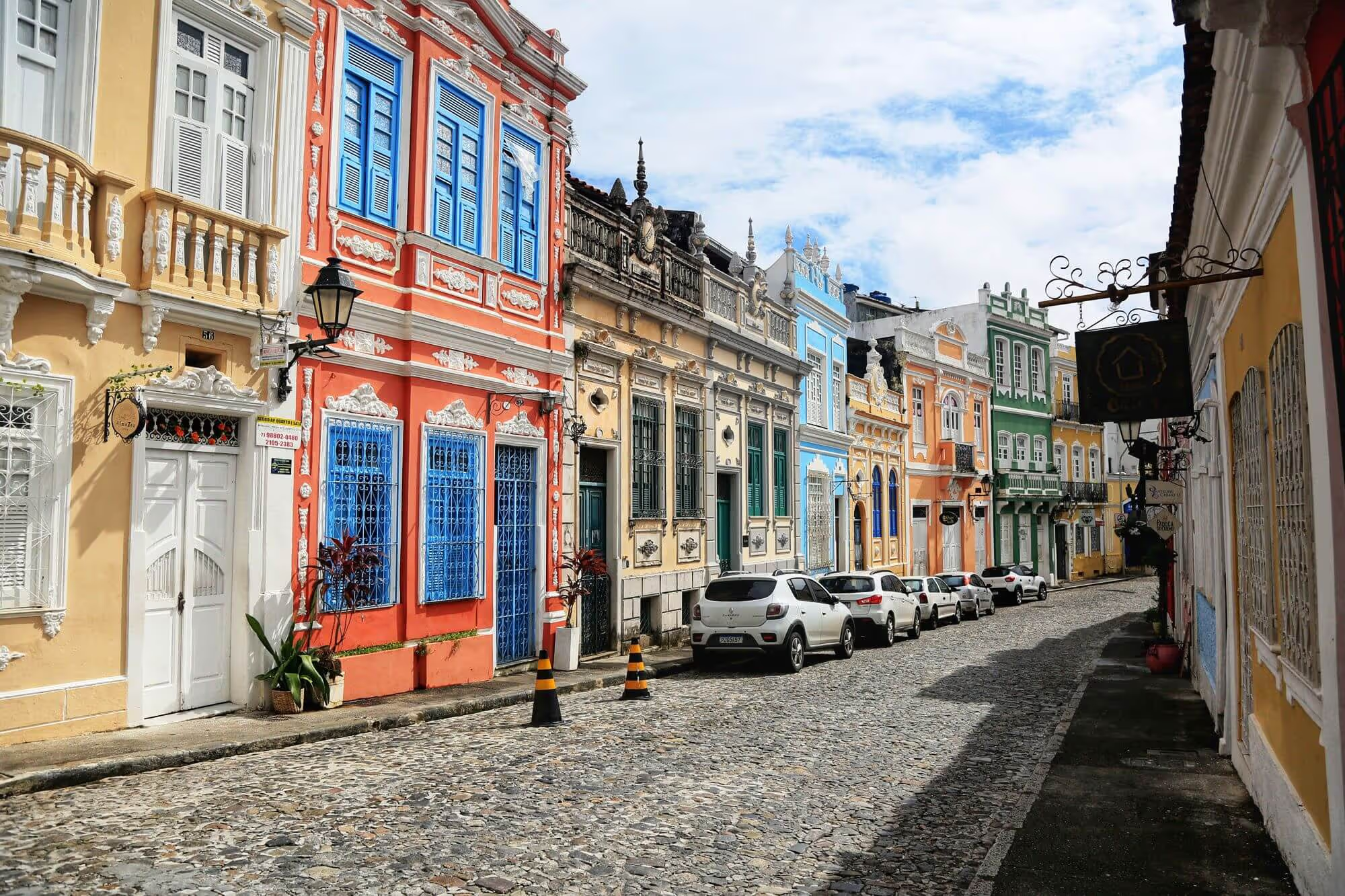

Forget what you think you know about Brazil. In Salvador da Bahia, the sun-drenched coast beats to a different drum. This is where Afro-Brazilian culture thrives, where colonial history whispers from every cobblestone, and where the energy is as intoxicating as the scent of fresh acarajé. Get ready to dive deep into the soul of Brazil, discover hidden gems, and embark on an adventure that will stay with you long after you've dusted the sand from your shoes.
Salvador, Brazil's first capital, is a city of captivating contrasts. Perched on a cliff overlooking the magnificent All Saints Bay, the Cidade Alta (Upper City) is a treasure trove of baroque architecture, with pastel-hued buildings and gold-laden churches that tell tales of a rich and complex past. Connecting the Upper and Lower Cities is the iconic Lacerda Elevator, a stunning Art Deco landmark that offers breathtaking panoramic views as it transports you between two worlds.
Down below, in the Cidade Baixa (Lower City), the rhythm of Bahian life is palpable. The air is thick with the buzz of bustling markets, the melodies of street musicians, and the laughter of locals. It's a sensory feast, a place to lose yourself in the vibrant tapestry of everyday life.
.avif)
While the candy-colored streets of the Pelourinho, a UNESCO World Heritage site, are a must-see, the true magic of Salvador lies in venturing off the beaten path. Here are a few secrets for the intrepid traveler:

Bahian cuisine is a vibrant fusion of African, Portuguese, and indigenous influences, and no trip to Salvador is complete without a deep dive into its culinary landscape. While you'll find acclaimed restaurants, the most authentic flavors are often found in unassuming, family-run establishments.

After a day of exploration, retreat to a haven that embodies the spirit of Salvador.
The Hotel Fasano Salvador, housed in a magnificent 1930s Art Deco building that was once the headquarters of the A Tarde newspaper, is a masterpiece of design. The hotel seamlessly blends its historical significance with contemporary sophistication. From the rooftop pool with its unparalleled views of All Saints Bay to the world-class Italian cuisine at Fasano Restaurant, every detail exudes an air of understated luxury.
On our Grand Rail Tour of Brazil, we often indulge our guests with a stay at the iconic Fera Palace Hotel. A true landmark of Salvador, this hotel, originally opened in 1934, has been meticulously restored to its former glory. Its Art Deco facade and opulent interiors transport you to a golden age of travel. From its elegant rooms to its impeccable service, the Fera Palace offers a truly unforgettable experience, setting the perfect tone for the incredible rail journey that lies ahead.

Salvador's intoxicating blend of history, culture, and natural beauty is just the beginning. This vibrant city serves as the captivating launchpad for our Grand Rail Tour of Brazil. Your adventure starts with a deep immersion in the soulful culture of Bahia before you take a comfortable flight to the coastal city of Vitória.
It is from Vitória that the "rail" in our Grand Rail Tour truly comes to life. Here, you will board the legendary long-distance train on the historic Vitória a Minas Railway for an unforgettable journey to Belo Horizonte. Settle in for one of Brazil's most scenic and iconic train voyages, a spectacular 13-hour ride that carves its way through the lush mountains, remote valleys, and verdant countryside of the "Green Heart of Brazil." This isn't just travel; it's a chance to witness the country's stunning landscapes unfold at a relaxing pace, sharing the experience with locals on this beloved and vital railway line.
.avif)
Whether you're drawn to the pulsating rhythms of Salvador's streets or the promise of epic landscapes from a train window, this journey promises to awaken your senses. Salvador is the perfect opening chapter to the grand Brazilian odyssey that awaits.
Are you ready to answer the call of Brazil?